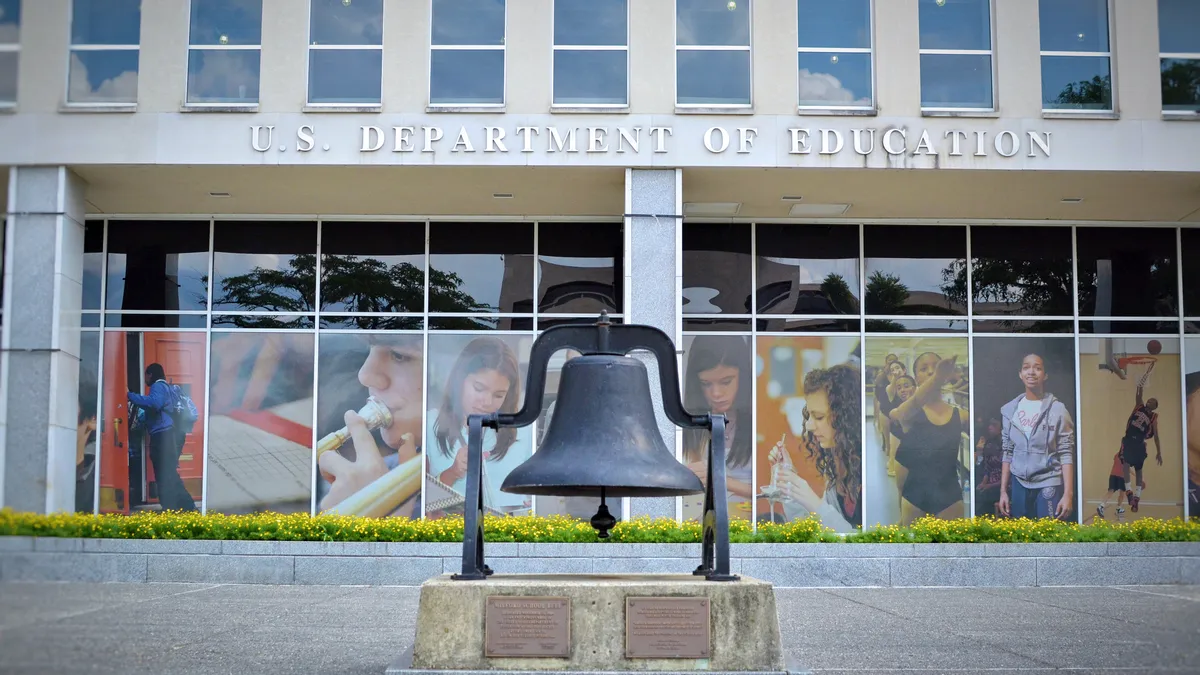Dive Brief:
- A report out Thursday from The Century Foundation takes aim at the U.S. Department of Education's system for monitoring financially struggling colleges, calling the approach "well-intentioned but ineffective."
- The left-leaning think tank contends that the composite score used to gauge institutions' financial health does not provide an accurate read and that corrective action tools, such as letters of credit and cash management, often aren't implemented early enough to be effective.
- Among its recommendations are that the department contract with financial advisory firms for holistic reviews, use a college's enrollment trends as a health indicator, and require struggling schools to put up more collateral sooner.
Dive Insight:
The financial responsibility standards are a "little-known provision of the law that has a lot of potential power," said Yan Cao, a fellow at The Century Foundation and a co-author of the report, in an interview with Education Dive.
"There's pretty broad alignment now in noticing that the financial composite score isn't accurately equipping the department with a diagnosis of schools that are about to financially collapse," she said.
Higher education experts discussing the successive shuttering of three for-profit college systems starting in late 2018 put some of the blame on the current warning system, which they said tends to sound the alarm too late and can be manipulated by colleges.
For instance, one measure that helps form the composite score allows schools to count debt amounts equal to their property, plant and equipment (PPE) value toward their liquidity calculation. The Century Foundation, warning this could encourage struggling schools to take on more debt, suggests narrowing the measure to just days of cash on hand. The authors also recommend the department track changes in enrollment as well as finances, calling the former "the most important indicator of an institution's financial health."
A 2017 report from the Government Accountability Office found that the composite score flagged only half of school closures since the 2010-11 academic year. The office said the score does not reflect key changes in accounting practices and new financial metrics that would give a broader sense of a school's financial health, and that institutions can use debt to change their scores.
Some of this is poised to change through new financial responsibility regulations released last month by the Ed Department.
The new rules, for example, require schools to show that long-term debt included in its composite score relates to PPE, which could make the figure less vulnerable to manipulation. The agency also said the composite score should be updated through future rulemaking.
However, the new rules scale back the scenarios in which an institution would be deemed financially unviable. Instead, the department wrote, it is focusing on colleges "whose post-trigger financial condition actually warrants financial protection" instead of automatically requiring measures such as letters of credit even at the risk of worsening an institution's financial position.
Legislators, meanwhile, are pushing for more scrutiny of struggling institutions.
A bipartisan bill introduced earlier this month in the U.S. House of Representatives would require accreditors to demand a teach-out plan or agreement if a college falls short of certain financial standards, including failing to reach the required composite score.
And at the state level, Massachusetts' House recently approved a bill that would penalize colleges for failing to meet certain financial transparency standards. The state, along with others in the New England region, is home to several colleges to close in recent years.













